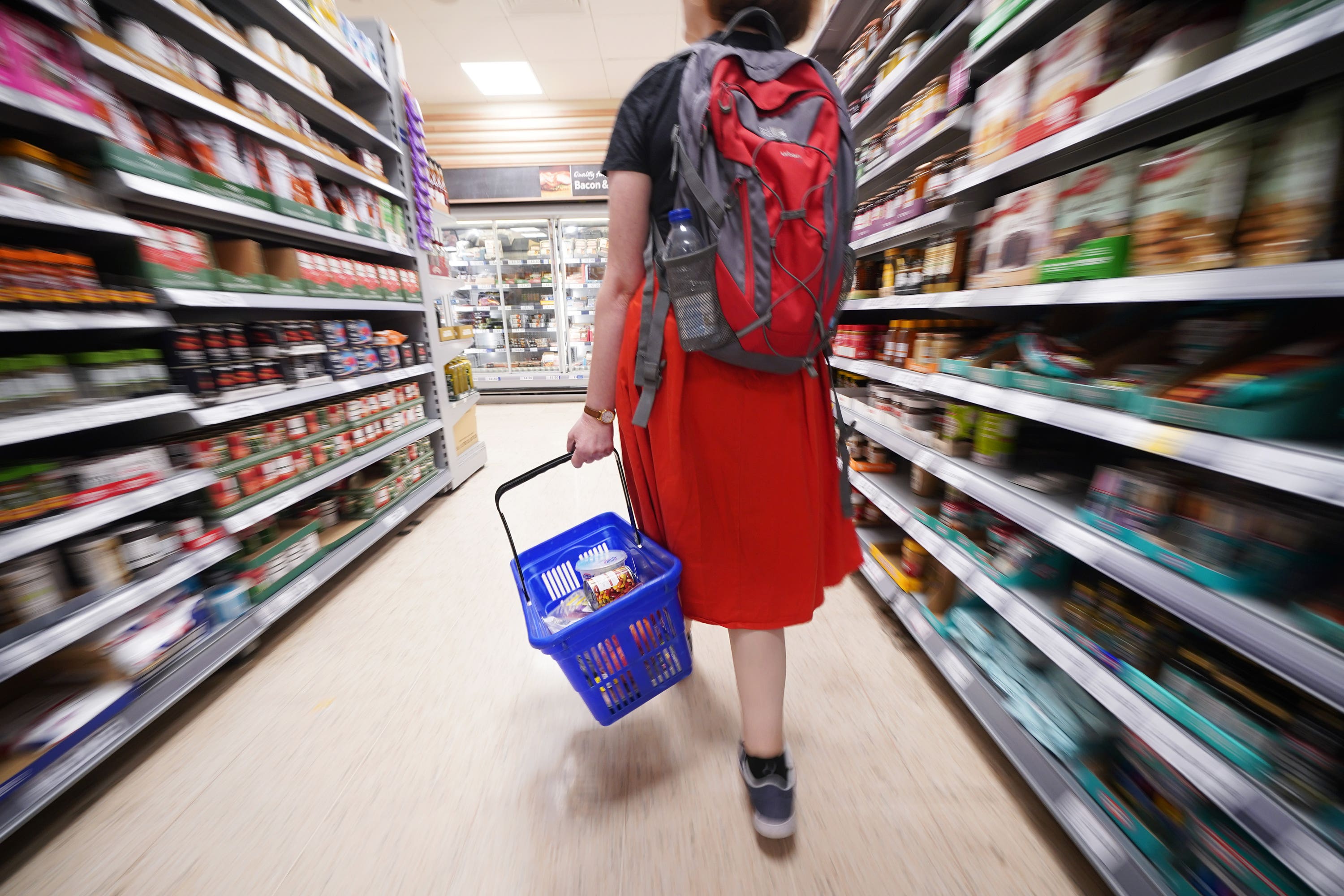Grocery price inflation falls to single digits for first time in 16 months
Prices across grocers were 9.7% higher than a year ago over the four weeks to October 29, analysts Kantar said.

Your support helps us to tell the story
From reproductive rights to climate change to Big Tech, The Independent is on the ground when the story is developing. Whether it's investigating the financials of Elon Musk's pro-Trump PAC or producing our latest documentary, 'The A Word', which shines a light on the American women fighting for reproductive rights, we know how important it is to parse out the facts from the messaging.
At such a critical moment in US history, we need reporters on the ground. Your donation allows us to keep sending journalists to speak to both sides of the story.
The Independent is trusted by Americans across the entire political spectrum. And unlike many other quality news outlets, we choose not to lock Americans out of our reporting and analysis with paywalls. We believe quality journalism should be available to everyone, paid for by those who can afford it.
Your support makes all the difference.Grocery price inflation has fallen to single digits for the first time in 16 months, figures show.
Prices across grocers were 9.7% higher than a year ago over the four weeks to October 29, down from the previous month’s 11%, analysts Kantar said.
It is the eighth consecutive decline in the rate of price rises since the figure peaked at 17.5% in March, and the first time the figure has fallen below 10% since July last year.
However, despite the milestone, consumers are only seeing year-on-year price falls in a limited number of categories, including butter, dried pasta and milk, according to Kantar’s data.
Every single one of the grocers increased the proportion of sales through deals versus last year, which is something that has only happened on one other occasion in nearly 10 years
Spending on promotions has now hit 27.2% of total grocery sales as shoppers continue to try to cut their bills – the highest level since last Christmas and a significant increase since last October when the figure was less than a quarter.
Consumers are also continuing to turn to own-label lines, which have grown ahead of their branded counterparts every month since February last year and saw a sales boost of 8% over the last four weeks.
Fraser McKevitt, head of retail and consumer insight at Kantar, said: “Retailers continue to look at ways of softening the blow for shoppers and slowing the rate of price rises.
“This has included upping the ante on promotions – every single one of the grocers increased the proportion of sales through deals versus last year, which is something that has only happened on one other occasion in nearly 10 years.
“It’s now been over a year-and-a-half of pinched pockets and people are continuing to respond by trading down on the items they’re putting into their baskets. The gap between own-label and branded goods is at its narrowest since spring last year.”
Lidl was again the fastest-growing retailer in October, with sales over the last quarter up by 14.7% to take a market share of 7.6%.
Discounters are making their mark in frozen items and fresh groceries like meat and veg, with these categories constituting a higher proportion of their sales than the traditional retailers
Fellow discounter Aldi sat beside Waitrose as one of only two grocers to increase its number of shoppers year-on-year, attracting 207,000 more customers than last year.
Aldi and Waitrose increased their sales by 13.2% and 5.4% respectively to take 9.7% and 4.6% of the market.
Mr McKevitt added: “The typical customer walking through the doors of the discounters is now representative of the country as a whole, with 54% of Aldi and Lidl’s sales coming from the more affluent ‘ABC1’ social group – close to the national average of 55%.
“Discounters are making their mark in frozen items and fresh groceries like meat and veg, with these categories constituting a higher proportion of their sales than the traditional retailers.”